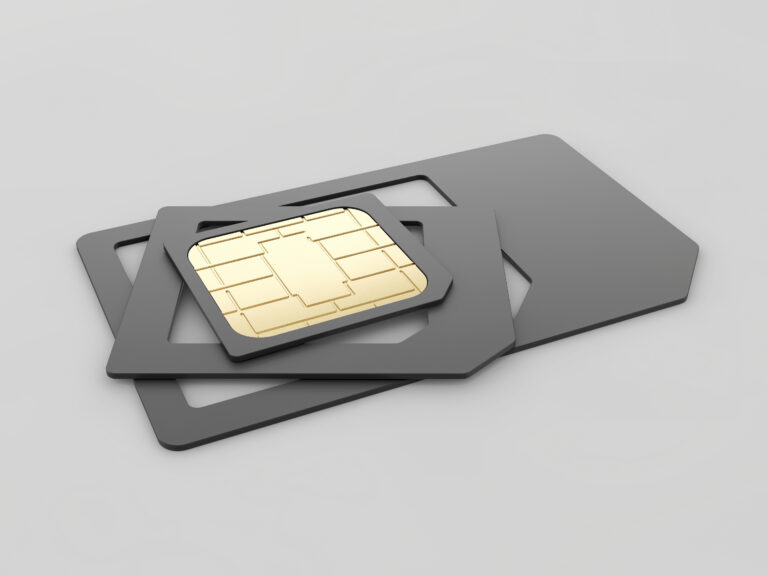The capabilities of each simcard formfactor are the same, but they each have different dimensions, making them suitable for specific types of devices. 2FF, 3FF and 4FF simcards must be placed in a device, while MFF2 simcards that are vacuum sealed are soldered directly to the printed circuit board. That is why they are also called embedded simcards.
If you’re building a device that relies on cellular connectivity, you need to know the different simcard formfactors available. As a result, you can make the best choice and design based on this choice. We take a closer look at the specifications and compare the different formfactors.
Simcards come in four different forms ranging from 2FF, which is the largest simcard, to 4FF, or nano simcard, which is the newest and smallest of the simcards. In addition, there is also a built-in simcard option: the MFF2 (sim chip).
Each generation of simcard is smaller than the previous one. Although they are usually referred to by the generation they originate from (2, 3, 4), they are also referred to as ‘mini simcards’ (2FF), ‘micro simcards’ (3FF), ‘nano simcards’ (4FF) , or called “embedded simcards” (MFF2).
Measurements by formfactor
- 2FF (mini): 25mm x 15mm x 0.76mm
- 3FF (micro): 15mm x 12mm x 0.76mm
- 4FF (nano): 12.3mm × 8.8mm × 0.67mm
- MFF2 (embedded): 5mm x 6mm x 1mm
Let’s take a closer look at the simcard formfactors currently in use.
2FF, 3FF, 4FF simcards
The actual chip in the simcards is identical, the border around it only gets smaller, therefore the formfactor does not affect the capabilities of a simcard.
The simcard formfactor you select will depend entirely on the size of your device and the amount of space you need to place a simcard. For example, wristbands for patient tracking may use a nano simcard (4FF), while larger devices such as routers used for smart building concepts may have a larger formfactor.
It is also possible to select industrial grade simcards. These simcards are more durable than traditional simcards and they are designed to meet higher demands of your IoT implementation. They come with features to protect against corrosion, vibration and other environmental factors, such as extreme temperature conditions. Industrial grade simcards can withstand temperatures between -40°C and +105°C.
MFF2 embedded simcard
To accommodate one of the 2FF-4FF simcards, you must physically have a sim slot built into the design of your device. An alternative option for the 2FF – 4FF simcards is the MFF2 embedded simcard. This simcard has several advantages. Because they come vacuum-sealed and can be soldered directly to your device’s circuit board, it increases reliability and reduces the impact of shock, corrosion and other environmental factors. In addition, the life cycle of a built-in simcard is much longer than a standard model. With an embedded simcard, the module will probably last longer than the device. Another important advantage of embedded simcards is physical security. Soldering the simcard directly to the circuit board of your device makes it impossible for anyone to remove the simcard.
eUICC
An Embedded Universal Integrated Circuit Card (eUICC) is a component that can be installed on any simcard formfactor. But not every simcard has eUICC capability.
Whatever formfactor you choose, we can take care of it for you. At Thingsdata, we specialize in IoT connectivity. If you have any questions about simcard formfactors or the best connectivity solution for your organization, our team is always ready to help and advise you.
Need reliable IoT SIM cards? Request our test kit for 3 free SIMs with 100 MB data for 3 months. Experience seamless IoT connectivity today.
Looking for a reliable IoT partner? Download our brochure for instant access to valuable insights about our services and IoT solutions.
